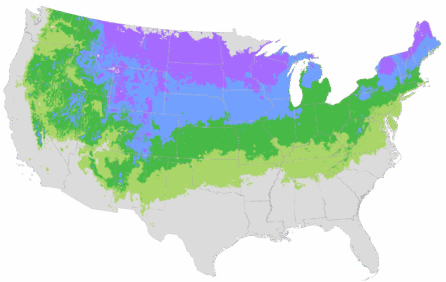You're growing in this Zip Code: 43215
Change LocationDiscover Plants for Your Area
Hicks Yew
Taxus x media 'Hicksii'
Retailers Near You
No Retailers found within 100 miles of your zipcode
| Bloom Time | Conifer; prized for foliage. |
|---|---|
| Deciduous/Evergreen | Evergreen |
| Special Features | Easy Care, Ornamental Berries, Waterwise |
| Problems/Solutions | Coastal Exposure, Rabbit Resistant, Road Salt Tolerant |
| Growth Rate | Slow |
| Growth Habit | Columnar |
| Landscape Use | Hedge, Privacy Screen |
| Design Ideas | This yew is a traditional hedge plant, useful for its narrow, upright growth that take to shearing well. It also works well as a single, columnar accent in the landscape or on either side of a doorway. |
| Foliage Color | Green |
| Companion Plants | Lilac (Syringa); Weigela (Weigela); Potentilla (Potentilla); Spirea (Spiraea); Periwinkle (Vinca) |
| Care Instructions | Provide evenly moist, well-drained soil with protection from harsh, drying winds. Water deeply, regularly during the first growing season to establish an extensive root system; reduce frequency, once established. Fertilize before new growth begins in spring. For a tidy, neat appearance, prune annually to shape. |
| Lore | All species of this genus are poisonous. One American species is the source of the cancer drug, Taxol. In England yew trees were restricted to church yards where they were not subject to livestock grazing, which caused many animal deaths in the past. Interestingly, deer may graze on them, unaffected. Birds are also attracted to the fruit, which they eat without consequence, as the flesh is not toxic to most, and the seed passes through intact. |
| Bloom Time | Conifer; prized for foliage. |
|---|---|
| Deciduous/Evergreen | Evergreen |
| Special Features | Easy Care, Ornamental Berries, Waterwise |
| Problems/Solutions | Coastal Exposure, Rabbit Resistant, Road Salt Tolerant |
| Growth Rate | Slow |
| Growth Habit | Columnar |
Retailers Near You
No Retailers found within 100 miles of your zipcode
Retailers Near You
No Retailers found within 100 miles of your zipcode
Buy Online
We cannot currently ship this product to your zip code.
About Us
We have been pioneers and craftsmen in the art of growing plants for nearly
100 years. Since our founding in Southern California by Harry E. Rosedale, Sr.
in 1926, we have been absolutely dedicated and obsessed with quality.
We have been pioneers and craftsmen in the art of growing plants for nearly 100 years. Since our founding in Southern California by Harry E. Rosedale, Sr. in 1926, we have been absolutely dedicated and obsessed with quality.








